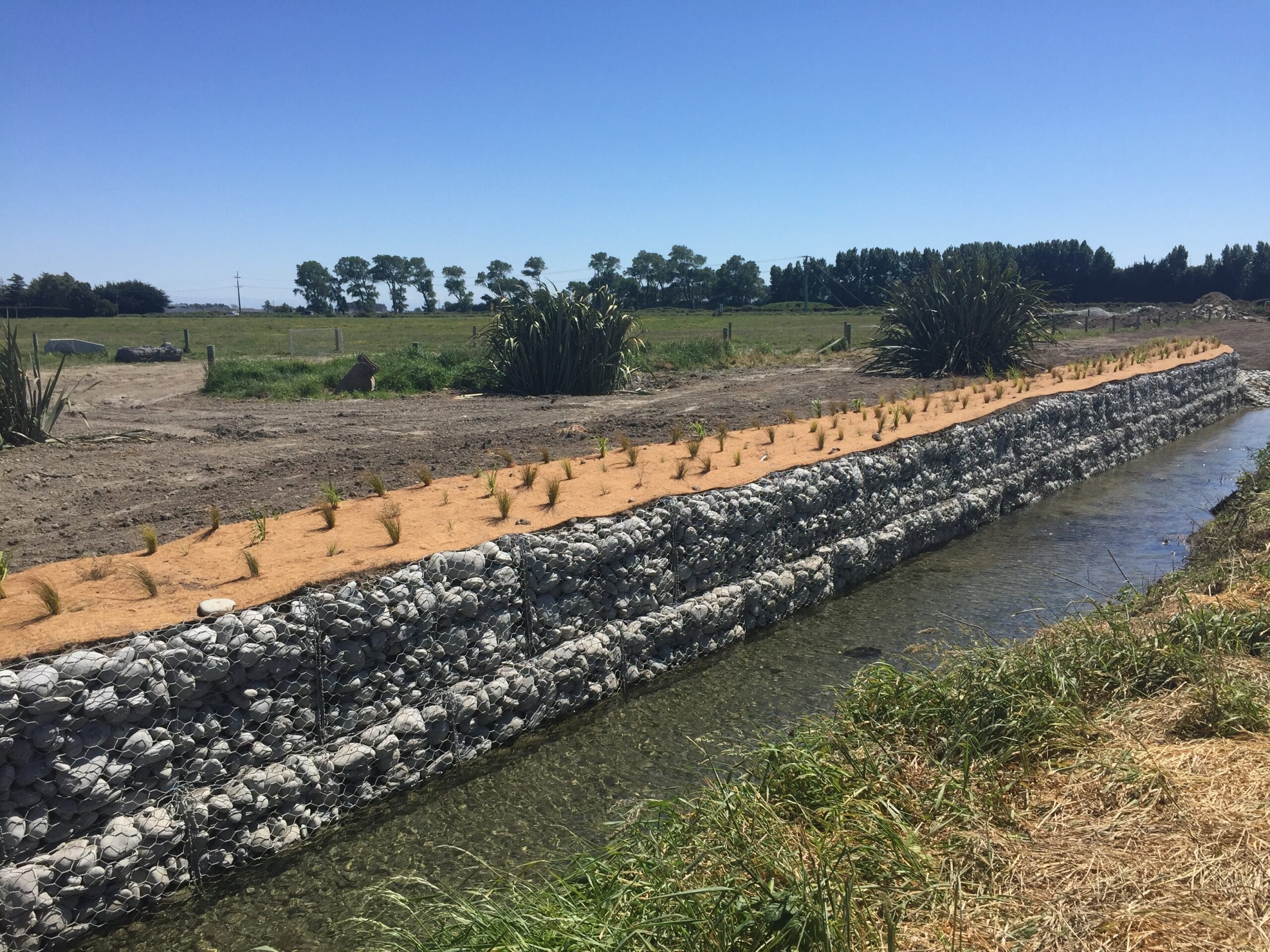
Lincoln ISMP Capital Works





Lincoln ISMP Capital Works
Client: Selwyn District Council
Contract value: 450K
Contract period: April – December 2017
Scope:
- Construction of a Spring diversion and re-constructing existing channels to increase capacity
- Supplying and installing 3m x 1.5m box culverts, 1m x 1m box culverts
- Gabion retaining walls, timber retaining walls, fencing, and planting
Technical Difficulty:
The works took place in or adjacent to an existing waterway. A resource consent was granted for the works, which had conditions that had to be complied with protecting the integrity of the waterways.
One section of the works was to replace a DN450 concrete culvert under Birches Road with a 1m x 1m Box unit, and associated chambers, timber retaining walls, regrading of channel and landscaping.
The larger portion of works was along Ellesmere Road and across Edward Street. Firstly, site clearance of vegetation, large poplars, culverts and fences took place. Following this the spring diversion channel and low flow channels were excavated to grade, rock armoured, topsoiled and grass-seeded. A gabion retaining wall was constructed to divert spring flow to spring diversion channel.
A 3m x 1.5m box culvert on a raft foundation was constructed across Edward St, adjacent to Ellesmere Rd. This required four way traffic management across the busy intersection, which was managed in-house. The culvert was installed in 4 days while only reducing traffic to one lane for a single day.
Existing underground services had to be negotiated and no fewer than 17 services were located, potholed and avoided with no disruption of services. Close collaboration with Chorus (fibre optic and copper telecommunication), Orion (underground and overhead electrical wiring), and Sicon Ferguson (maintenance contractor to the SDC for water supplies) was required to minimise the disruption to the services.
Works of this nature always have a downside in terms of timing. In this case it was ceasing works during the winter to avoid unnecessary sediment run-off or rutting of the site
